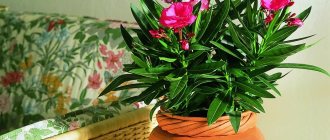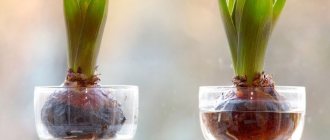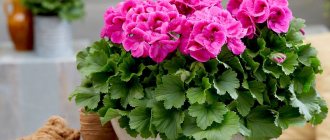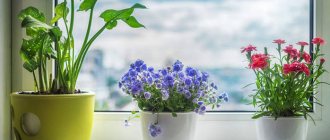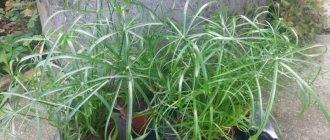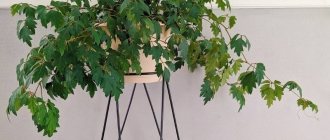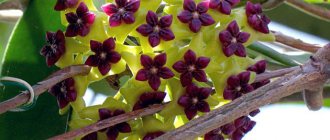The amazing world of plants that fills the planet brings a lot of joy to flora fans. However, some people only like hypoallergenic flowers with a subtle aroma. In the spring, when the garden is filled with colorful colors, real torture begins for them. It’s sad, but the torment ends in late autumn, along with the fallen leaves. What will help you stop seasonal suffering and enjoy the beauty of nature 100%? Maybe declare war on flowers that cause allergies? There is a more humane way. First of all, let's find out why plants cause allergies? And then we will get acquainted with popular hypoallergenic flowers that can be grown in the garden or indoors.
Aloe
An unpretentious house plant that brings great benefits. The list of medicinal properties of aloe is large: from healing abrasions and burns to strengthening the immune system. Experts recommend placing aloe in the room of people suffering from asthma.
The plant is absolutely safe for allergy sufferers and small children. The edges of the fleshy leaves are framed by a number of soft spines that are not capable of causing serious damage, and the juice of the leaves is harmless. What is especially important if a child breaks off a plant while playing.
Aloe does not like direct sunlight, so choose a bright place without bright lighting.
Dust collecting on the leaves can pose a danger to allergy sufferers. Therefore, they need to be wiped regularly.
Croton
The spectacular croton with carved colored leaves is also safe if you have allergies. Its glossy leaves do not attract dust, and the low need for watering prevents mold from developing in the soil.
The plant requires care and the slightest disturbance affects its appearance. Croton grows in the form of a tree or bush.
In a children's room it is better to keep it on the windowsill, and in large rooms it grows well in a floor planter.
“Unsafe” and prohibited flowers for allergy sufferers
In medicine, there are about 7,000 species of flowers and about 11,000 species of flowering plants to which a person may be allergic. Moreover, in some countries there are even “floristic maps” showing the periods and areas of flowering of plants that cause allergies. The most famous allergic flowers and plants include:
- Cereals (rice, alfalfa, rye, wheat) that can cause cross-allergy to pollen from other plants.
- Ambrosia wormwood (weed) - its flowering can cause very severe allergies: with a concentration of only 25 pollen grains per 1 m³ of atmospheric air, there is a high probability of moderate hay fever (rhinoconjunctivitis).
- Flowers from the Astrov genus - sunflowers, dandelions, daisies, coltsfoot, common chamomile (not only its flowers, but also its leaves can cause allergies).
- Plants with a strong aroma, especially lilies and bird cherry during the flowering period.
- Some indoor plants, due to the distribution of essential oils, can also cause allergies - for example, geranium (pelargonium). If geranium essential oils come into contact with the mucous membrane of the respiratory organs, an allergic person may experience swelling, itching and severe coughing attacks.
It is worth remembering this list when choosing a bouquet not only for an allergy sufferer, but also for discharge from the maternity hospital - it is especially contraindicated to present strong-smelling plants to a young mother and baby that can easily provoke an allergic reaction in the baby.
Peperomia
Peperomia will be an assistant in maintaining and restoring health. It has the properties of purifying the air from microorganisms that cause diseases and allergens.
The plant is compact and very decorative. The advantages are low maintenance requirements. Peperomia can grow and even bloom in the shade, and it is watered when the soil becomes completely dry.
Begonia
Begonia loves a bright place and abundant watering. Its large, fleshy greens act as a filter that cleans the air of dust and bacteria. And the essential oils released by the plant have a beneficial effect on the respiratory tract.
Unlike other pubescent plants, begonia is not dangerous for allergies and for children. Its hairs do not fall off and have a soft structure, without hooks at the end.
Causes of allergies to flowers
Doctors identify two main causes of allergies to flowering plants:
- Pollen entering the body settles on the mucous membrane of the upper respiratory tract and causes irritation. In this case, pollen elements must have the so-called “permeability factor,” that is, pass through the epithelial ball and disrupt the protective functions of the mucous membrane of the upper respiratory tract.
- Activation of the reagin mechanism in allergies: pollen enters the body and causes a reaction of immunoglobulins E and G, and also increases the amount of serotonin and histamine in the blood.
To understand whether there is an allergy to flowers (or rather, their pollen during flowering), it is worth knowing exactly how it manifests itself, that is, the symptoms of an allergic reaction in the body. The most pronounced include:
- tearfulness;
- skin itching;
- dry cough;
- runny nose;
- sneezing;
- swelling of the eyelids and nose;
- conjunctivitis.
In the most severe cases, symptoms can be more serious, including angioedema and bronchial asthma. Please note: in some cases, a severe allergic reaction to flowers can cause increased sensitivity to other common allergens, such as household dust or pet dander. It is important to understand that any allergy, including to flowers, cannot be treated - you can only relieve its symptoms with the help of certain medications and avoid contact with allergens. To accurately determine such substances, you should contact a laboratory to carry out special skin tests (it is recommended to undergo this procedure between November and March, when there are no flowering plants outside). During the manipulation, shallow scratches are made on the skin, onto which allergen concentrates are dripped, observing the patient’s reaction.
Phalaenopsis Orchid
This plant cannot cause allergies due to its biological characteristics. The fact is that in orchids, pollen, which is the main cause of attacks, does not rise into the air. It sticks together into lines that can only be carried by insects.
The only way to get pollen into your respiratory tract is to smell the flower or touch it with your hands and then rub your nose.
The orchid is capricious and demanding in terms of lighting and soil composition. People suffering from allergies should change the soil frequently, as the bark that is part of it begins to decompose and release harmful substances.
The plant is absolutely safe in a room with children.
Be careful, bouquet (or not)
Allergies are a chronic disease caused by an unwanted reaction of the immune system to everyday things.
For example, on spores or pollen of flowering plants. Normally, a person should not notice them at all. Symptoms:
- runny nose with nasal congestion, complete loss of smell, hoarse voice, sneezing;
- conjunctivitis with redness of the eyes, watery eyes, itching;
- dermatitis (usually on the face and hands), which is accompanied by dry skin, the appearance of spots, and a strong desire to scratch;
- hacking cough, which intensifies during stress and is accompanied by a sore throat;
- fatigue, drowsiness and irritability due to physical discomfort.
This allergic reaction is called hay fever. This is a seasonal phenomenon, depending on flowering and weather: the wind carries pollen over many kilometers, so symptoms appear even in those people who live very far from the place where the allergen grows. Allergies cannot be cured, only symptoms can be relieved.
Often cause allergies:
- strong-smelling flowers (lilies);
- asteraceae - daisies, daisies, sunflowers;
- flowering cereals, they are used to decorate designer bouquets;
- fern spores.
After contact with industrially grown flowers, sensitive people may have contact reactions such as urticaria or local itching. They pass quickly and depend on what the plants were treated with before cutting: unscrupulous producers sometimes spray the flowers with a mixture of pesticides to prolong the life of the beautiful ones, but - alas! fragile buds.
Therefore, you need to buy bouquets in stores that value their reputation and cooperate only with certified greenhouses that do not resort to such tricks. For example, the BouquetsMigom delivery service carefully selects suppliers and guarantees the high quality and safety of the flowers it sells.
Spathiphyllum
A charming plant with large leaves and delicate white flowers. Spathiphyllum purifies and moisturizes the air, saturates it with oxygen.
Flower care is minimal: regularly water and wipe the leaves.
The plant is popularly called the “flower of happiness”; it is believed to lift the spirits. Therefore, it is especially recommended for growing in a children's room. The flower does not contain any harmful substances, so you don’t have to worry about your child accidentally biting off a leaf.
Selecting houseplants responsibly will help you create an allergy-safe mini-garden. And the presence of flowers in the children's room will help create a favorable atmosphere and teach the child responsibility.
Dangerous plants or human factor
Research shows that flowering plants themselves do not pose much harm to people. The main risk factors are pollen, poisonous sap and improper crop care. In most cases, it is the invisible “powder” that causes mucosal irritation in some people.
Allergies occur in those who have a hereditary predisposition to certain plant elements.
Since little-studied genes are behind the problem, it is best to grow hypoallergenic flowers on the site or indoors. Thanks to this, everyone will have the opportunity to enjoy the beauty of nature. However, it should be borne in mind that some indoor plants have poisonous white juice flowing inside their shoots and leaves. When it gets on the skin, it causes irritation and tearing. Sometimes red spots appear.
Such instances include:
- monstera;
- ficus;
- Euphorbia Mil;
- dieffenbachia;
- codiaum;
- poinsettia.
Even those who do not suffer from allergies should wear gloves when replanting such plants. Wash your hands thoroughly after handling them.
In addition, there are dangerous plant allergens that decorate the homes, offices and gardens of our compatriots:
- primrose;
- geranium;
- philodendron;
- hydrangea;
- azalea.
Sometimes the cause of an allergy can be improper care of a houseplant. Excessive watering leads to the appearance of mold in the pot, the spores of which have a detrimental effect on human mucous membranes. Experts recommend ventilating the room where “dangerous” crops grow more often. In case of severe attacks, it is better to have flowers that you are not allergic to in order to create a cozy atmosphere in the house or area. After all, they lift your spirits, relieve stress and bring a lot of joy.
In indoor plants, harmful substances are found in the foliage and shoots. Sometimes the strongest pathogens are fertilizers and dust that settles on the surface of plants.
